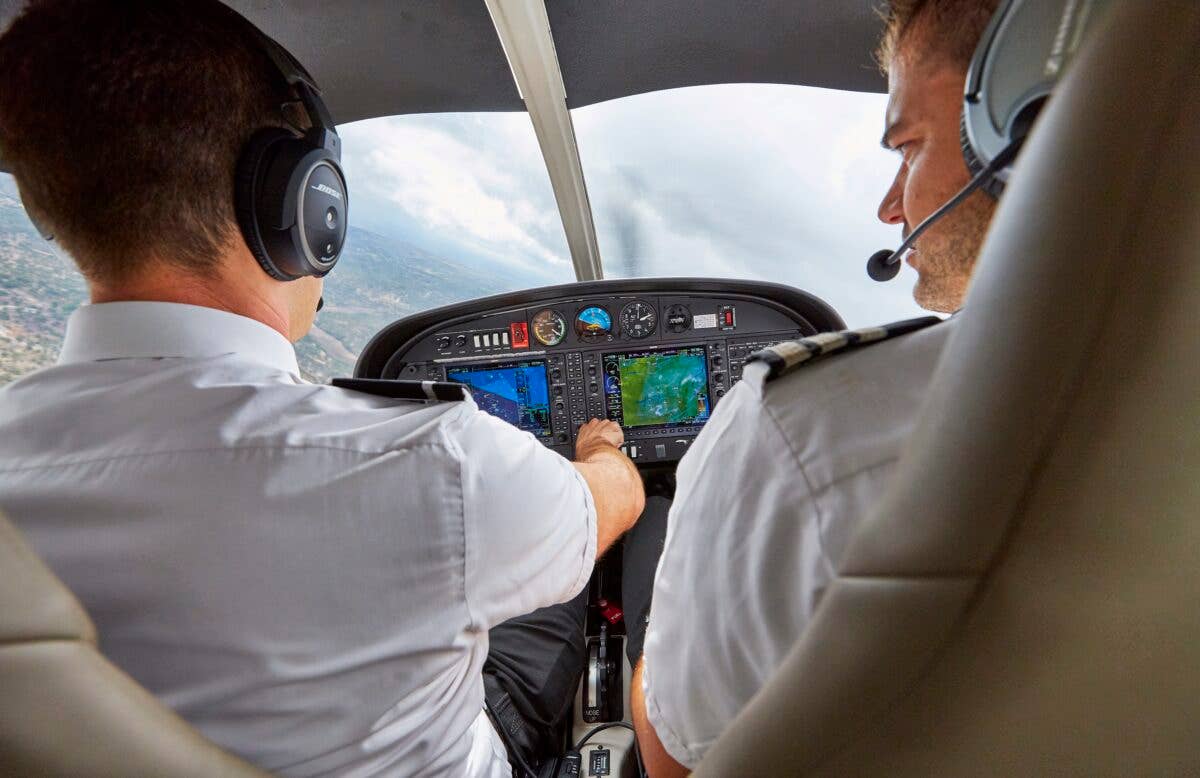L3Harris Streamlines Pilot Training, Installs Flight Data Monitoring in Fleet
The academy offers two pathways, plus a means by which it will make its operations ‘more efficient.’

L3Harris Technologies launches two new EASA/UK-based airline transport pilot license (ATPL) programs for aspiring pilots. [Courtesy: L3Harris]
With both major and low-cost carriers in the European Union reporting strong third quarter results, many are opening back up to pilot training programs. And L3Harris Technologies has positioned itself to accommodate the influx of students.
That’s according to David Coward, vice president and general manager of L3Harris Airline Academy, part of the company’s Training Services division. “COVID was a big challenge for us, and during that we had to trim the business,” Coward said in an interview with FLYING on Friday.
Coward came into his current role about three years ago, in 2020, and he has since worked with the internal team to streamline the company’s offerings and physical footprint. This included a divesture from its location in Ponte de Sor, Portugal, which was finalized in September.
The move returns the academy to essentially three bases of operation, the London Training Centre, near Gatwick Airport (EGKK) in Crawley, U.K., facilities at Cranfield University on the airport (EGTC) near Milton Keynes, U.K., and its stateside location at Orlando Sanford International Airport (KSFB) in Florida. L3Harris has conducted FAA-based courses towards the airline transport pilot certificate or flight instructor certificate.
Essentially, for cadets training under an EASA or U.K. CAA course, ground training takes place at Gatwick, the single-engine VFR flight portion of the course is flown in Florida, and the multiengine and complex IFR work is completed in Cranfield. Completion of the course’s APS course—what used to be the MCC or multi-crew coordination course—finishes up at the Gatwick training facility.
Coward points to the Orlando location as being a draw for students, whether studying within the company’s FAA or EASA/U.K.-based courses. “Florida was always in people’s passions,” he said. “The weather location down in Florida is fantastic, we get great flying, great weather, the timelines and the amount of flying that our customers are able to do is just night and day compared to what we could do in Europe.
“Although we plan about 32 weeks in Florida, most of our students at the moment are now tracking about five or six weeks ahead of that.”
Two Programs, Two Entry Points
L3Harris has created two pathways for pilots seeking to complete certificates with the academy—one, a fully integrated program for cadets starting from scratch, and one that allows for those who have completed some work already to join the program.
“The Integrated ATPL [airline transport pilot license] packages L3Harris’ Airline Academy’s commercial pilot training with accommodation throughout the U.S. flight training phase, based in Orlando, Florida, training assurance and access to its Graduate Placement Pool,” said the company in a release. “Optional accommodation packages will be available for new trainees during the U.K.-based ground school and advanced training phases.
“The Flying Start ATPL provides direct entry to the company’s flight training programme for those who have already completed their theoretical knowledge ATPL exams. It similarly packages accommodation during its U.S. flight training phase, training assurance, and access to the Graduate Placement Pool.”
With the move, Coward said that the company is also looking to price its products correctly for the economic realities worldwide. “In response to cost of living increases across the globe we have launched two ATPL programmes at price points we believe reflect the value of our training proposition,” he said. “Our prices now include accommodation throughout the U.S.-based flight training phase, training assurance, providing peace of mind should the trainees need additional training and access to our world-renowned Graduate Placement Pool, providing graduates career services and support as they look to start their airline career. This makes our pricing clear and transparent.”
Flight Data Monitoring in the Fleet
L3Harris also took advantage of the downtime created by the pandemic to integrate one of its other company strengths—flight data monitoring—into the training fleet. “What we’ve done is fit all of our aircraft with wireless data transmitters and set up a [way] to enable all of our flight data to be analyzed using [company systems.]” It’s a commercial standard flight data monitoring program, taking the process a level above that of off-the-shelf flight tracking and trend monitoring.
“[We’re] trying to bring all of that data journey back into our portfolio, trying to use that data as a common thread to enhance our customers’ outcomes,” said Coward. He envisions the utilization of the data in three steps for the academy. First, from a safety perspective, for trend and event tracking from the outset. Second, for a debriefing perspective, particularly, allowing for the thorough postflight review of solo flights for which there has been little concrete data other than what the student self-reports. Third, Coward sees the use of the data beginning next year in improving operational performance, including reduction of fuel use and tracking of the academy’s carbon footprint and CO2 emissions.
“We’ll be looking at how we use this data to make ourselves a more efficient operation,” he said. “We won an award at the beginning of the year from Air Transport World for Technology Achievement in 2022.”

Subscribe to Our Newsletter
Get the latest FLYING stories delivered directly to your inbox






